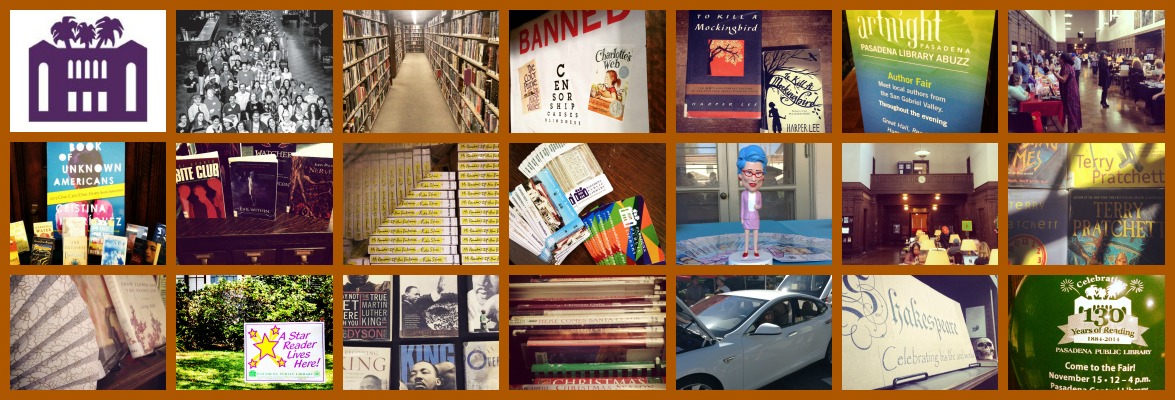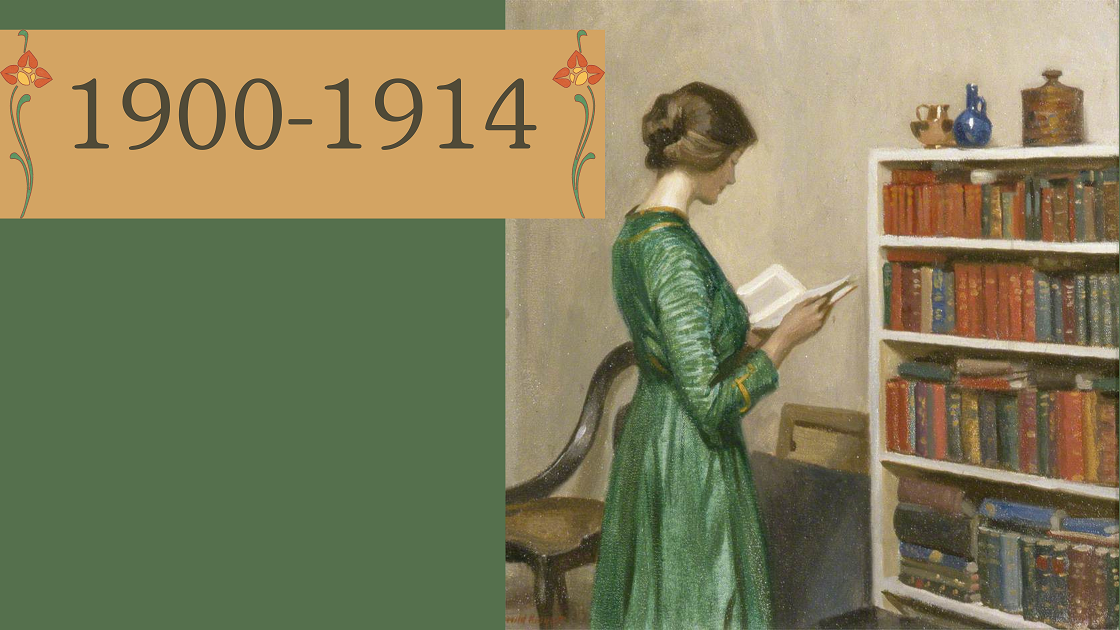The following books were published between the dawn of the new century –the Progressive Era–and the outbreak of World War I. The list of bestsellers for each year comes from a literary journal, The Bookman (the famous New York Times bestseller lists weren’t published until 1931!).
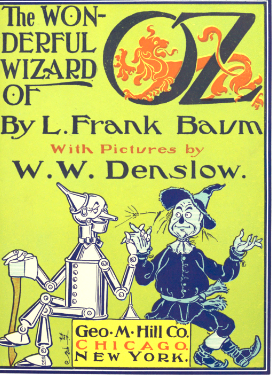 The Wonderful Wizard of Oz by L. Frank Baum, 1900
The Wonderful Wizard of Oz by L. Frank Baum, 1900
L. Frank Baum never imagined the impact The Wonderful Wizard of Oz would have on children’s writing or the appeal the book would have to generations of readers. Although he wrote numerous books, The Wonderful Wizard of Oz is easily his most enduring. Baum wanted to write a fairy tale that was American, not European, although he introduced elements of traditional European fairy tales (witches, castles, forests) into the story. By presenting a female protagonist, casual language, characters such as the Scarecrow and the Tin Woodman, and settings such as Kansas, Baum created a new approach to children’s writing that is distinctly American.
Before The Wonderful Wizard of Oz, children’s books were stilted morality tales designed to instruct or to frighten readers into behaving properly. Baum, however, presented a thrilling adventure from a child’s point of view, showing the child’s ability to solve her own problems and return to the security of her home.
Read Along: We recommend a fictional biography of Baum’s widow, Maud, who was the daughter of well-known suffragist, Matilda Joslyn Gage: Finding Dorothy by Elizabeth Letts (2019) (the Summer 2020 One City, One Story selection) is the result of Letts’s journey into the amazing lives of Frank and Maud Baum. Written as fiction but based closely on the truth, Elizabeth Letts’s new book tells a story of love, loss, inspiration, and perseverance, set in America’s heartland.
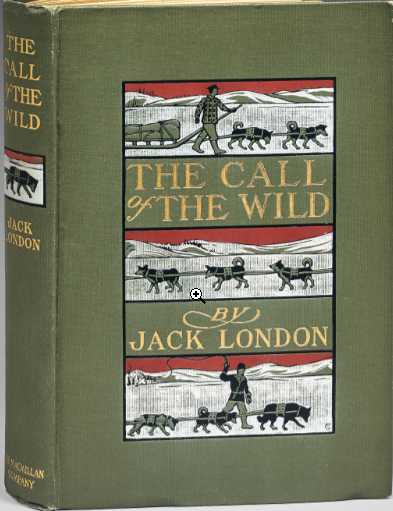 The Call of the Wild by Jack London, 1903
The Call of the Wild by Jack London, 1903
In The Call of the Wild, the hero is a dog—the story is told entirely from the dog Buck’s point of view—and even when ill treatment causes him to revert to the “dominant primordial beast” he is a symbol of what man can do to overcome obstacles and become the leader of his fellows. A mongrel, a cross between a German Shepherd and a St. Bernard, Buck is uprooted, stolen from his comfortable California home, and sold for work as a sled dog in the Gold Rush of 1897. Then he becomes the companion and eventually the savior of a young prospector.
Read Along: The Art of Racing in the Rain by Garth Stein (2008) is also narrated by a dog, but one whose life is one of relative physical ease and centered in the love of his family. Enzo is one of the best dog narrators you will meet, and this novel is a heart-wrenching but deeply funny and ultimately uplifting story of family, love, loyalty, and hope–a captivating look at the wonders and absurdities of human life . . . as only a dog could tell it.
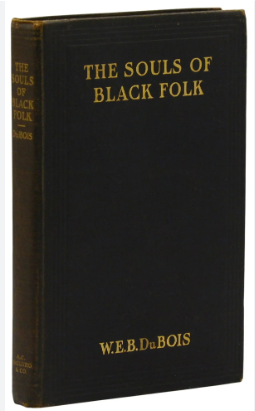 The Souls of Black Folk by W.E.B. Du Bois, 1903
The Souls of Black Folk by W.E.B. Du Bois, 1903
W. E. B. Du Bois introduces The Souls of Black Folk with the forethought: “…herein lie buried many things which if read with patience may show the strange meaning of being black here in the dawning of the twentieth century. This meaning is not without interest to you, gentle reader; for the problem of the twentieth century is the problem of the color-line.” These succinct lines summarize the aim of the collection, which is to impress upon the world the particular experience of being an African American some forty years after the Civil War. The work consists of fourteen essays on various topics, from a history of the U.S. government’s efforts at Reconstruction to a discussion of the role of religion in he black community. First published in 1903, it was reprinted twenty-four times between then and 1940 alone; it is easily Du Bois’ most widely read book and is considered a masterpiece. Coined the Father of Social Science, Du Bois brings together a blend of history, sociological data, poetry, song, and the benefit of his personal experience to propose his vision of how and why color poses such a dilemma at the turn of the twentieth century. His assertion is fortuitous, and the collection continues to provide insight into the ways that the African-American culture is intrinsic to the larger American culture, and how history has made that relationship inherently problematic.
Read Along: My People: Five Decades of Writing About Black Lives by Charlayne Hunter-Gault (2022): From the legendary Emmy Award-winning journalist, a collection of ground-breaking reportage from across five decades which vividly chronicles the experience of Black life in America today. At just nineteen years old, Charlayne Hunter-Gault made national news after she had mounted a successful legal challenge that culminated in her admission to the University of Georgia in January 1961–making her one of the first two Black students to integrate the institution. As an adult, Charlayne switched from being the subject of news to covering it, becoming one of its most recognized and acclaimed interpreters. Over more than five decades, this dedicated reporter charted a course through some of the world’s most respected journalistic institutions, including The New Yorker, NBC, and the New York Times, where she was often the only Black woman in the newsroom. Throughout her storied career, Charlayne has chronicled the lives of Black people in America–shining a light on their experiences and giving a glimpse into their community as never before. Though she has covered numerous topics and events, observed as a whole, her work reveals the evolving issues at the forefront of Black Americans lives and how many of the same issues continue to persist today.
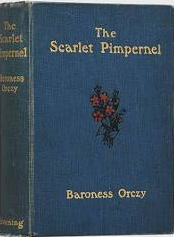 The Scarlet Pimpernel by Baroness Orczy, 1905
The Scarlet Pimpernel by Baroness Orczy, 1905
The novel’s protagonist, Sir Percy Blakeney, ostensibly a foppish English aristocrat, is secretly the Scarlet Pimpernel, a swashbuckling hero and elusive master of disguise who rescues French aristocrats and smuggles them out of France to safety during the French Revolution. His nemesis is Citizen Chauvelin, a ruthless agent of Robespierre. While the novel takes place in 1792 during the French Revolution, it has a number of important parallels to European life a century later.
Read Along: Deciding that true romantic heroes are a thing of the past, Eloise Kelly, an intelligent American who always manages to wear her Jimmy Choo suede boots on the day it rains, leaves Harvard’s Widener Library bound for England to finish her dissertation on the dashing pair of spies the Scarlet Pimpernel and the Purple Gentian. What she discovers is something the finest historians have missed: a secret history that begins with a letter dated 1803. Eloise has found the secret history of the Pink Carnation–the most elusive spy of all time, the spy who single-handedly saved England from Napoleon’s invasion. The Secret History of the Pink Carnation by Lauren Willig (2005), a wildly imaginative and highly adventurous debut, opens with the story of a modern-day heroine but soon becomes a book within a book. Eloise Kelly settles in to read the secret history hoping to unmask the Pink Carnation’s identity, but before she can make this discovery, she uncovers a passionate romance within the pages of the secret history that almost threw off the course of world events. How did the Pink Carnation save England? What became of the Scarlet Pimpernel and the Purple Gentian? And will Eloise Kelly find a hero of her own?
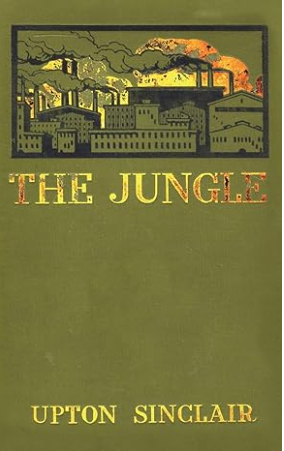 The Jungle by Upton Sinclair, 1906
The Jungle by Upton Sinclair, 1906
The Jungle, Upton Sinclair’s one claim to a place in literary history, was not so much a novel as it was a tract for the times. Sinclair intended it not as a work of art but as an instrument for changing people’s minds. He thought of it as an expendable round of ammunition in the battle for social justice. The novel is better judged as propaganda than as literature, but it has compelling power and interests readers today long after the circumstances under which it was written passed into history. Sinclair’s considerable ability as a storyteller, coupled with the fierce indignation of a born reformer, made The Jungle perhaps the most memorable document of the muckraking movement. He was incensed by the appalling conditions he observed among the workers in the Chicago stockyards and was determined to do something to improve them.
Read Along: The Poison Squad: One Chemist’s Single-Minded Crusade for Food Safety at the Turn of the Twentieth Century by Deborah Blum (2018): A sort of true-life companion history to The Jungle. By the end of nineteenth century, food was dangerous. Lethal, even. Unchecked by government regulation, basic safety, or even labelling requirements, food manufacturers put profit before the health of their customers. Then, in 1883, Dr. Harvey Washington Wiley, a chemistry professor from Purdue University, was named chief chemist of the agriculture department, and the agency began methodically investigating food and drink fraud, even conducting shocking human tests on groups of young men who came to be known as, “The Poison Squad.” Together with a gallant cast, Dr. Wiley changed history. When the landmark 1906 Food and Drug Act was finally passed, it was known across the land, as “Dr. Wiley’s Law.” Blum brings to life this timeless and hugely satisfying “David and Goliath” tale with righteous verve and style, driving home the moral imperative of confronting corporate greed and government corruption with a bracing clarity, which speaks resoundingly to the enormous social and political challenges we face today.
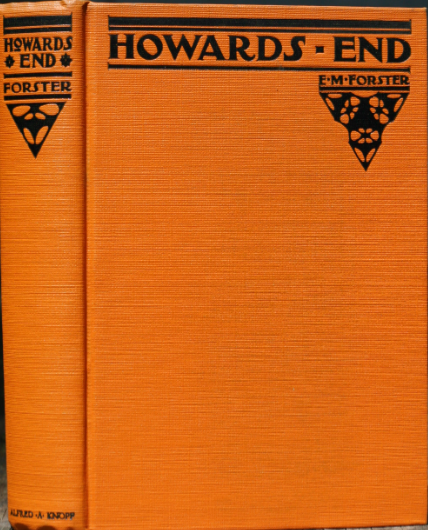 Howards End by E. M. Forster, 1910
Howards End by E. M. Forster, 1910
The narrative concerns the relationships that develop between the imaginative, life-loving Schlegel family—Margaret, Helen, and their brother Tibby—and the apparently cool, pragmatic Wilcoxes—Henry and Ruth and their children Charles, Paul, and Evie. Margaret finds a soul mate in Ruth, who before dying declares in a note that her family country house, Howards End, should go to Margaret. Her survivors choose to ignore her wishes, but after marrying Henry, Margaret ultimately does come to own the house. In a symbolic ending, Margaret brings Henry back to Howards End after several traumatic events have left him a broken man.
Read Along: Read On Beauty by Zadie Smith (2005). Set on both sides of the Atlantic, Zadie Smith’s third novel is a brilliant analysis of family life, the institution of marriage, intersections of the personal and political, and an honest look at people’s deceptions. It is also, as you might expect, very funny indeed.
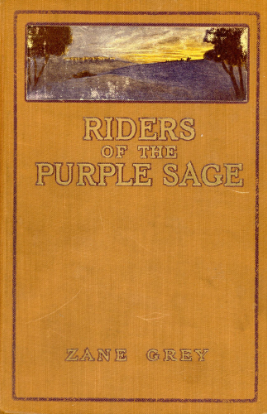 Riders of the Purple Sage by Zane Grey, 1912
Riders of the Purple Sage by Zane Grey, 1912
Zane Grey’s Riders of the Purple Sage is an iconic Western novel. Set in 1871, the novel follows wealthy ranch owner Jane Withersteen, who has incurred the displeasure of the leaders of her Mormon church because she befriends Gentiles (non-Mormons) and refuses to marry a church elder. She meets a man known only as Lassiter, an archetypal Western hero and a mysterious, purposeful, and deadly gunslinger with streaks of nobility and gentleness. Lassiter helps rescue Withersteen and her cohort from the Mormon leadership, and they ultimately escape to a secluded valley where they can live in peace, away from their persecutors. Throughout the novel, Grey characterizes Mormon church leaders as demonic specters moving silently in the night to kidnap and torture locals.
Read Along: The Big Rock Candy Mountain by Wallace Stegner (1943): Bo Mason, his wife, Elsa, and their two boys live a transient life of poverty and despair. Drifting from town to town and from state to state, the violent, ruthless Bo seeks out his fortune-in the hotel business, in new farmland, and, eventually, in illegal rum-running through the treacherous back roads of the American Northwest. In this affecting narrative, Wallace Stegner portrays over three decades in the life of the Mason family as they struggle to survive during the lean years of the early twentieth century.
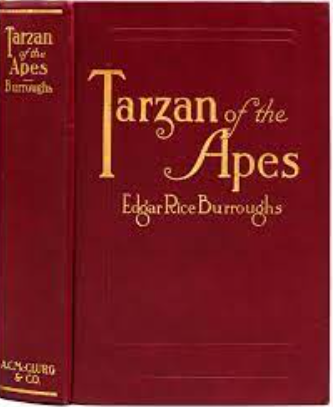 Tarzan of the Apes by Edgar Rice Burroughs, 1914
Tarzan of the Apes by Edgar Rice Burroughs, 1914
The first of Burroughs’ stories about the famous jungle man, the novel Tarzan of the Apes gave rise to a multimedia industry built around the archetype of the masculine hero whose savage appearance and environment can not fully mask his inherited aristocratic instincts.
Tarzan’s story begins when Lord and Lady Greystoke are stranded on the West African coast following a shipboard mutiny. A fair-haired, fair-skinned boy is born to the upper class Britons, who manage to survive in the jungle and raise their son past his first birthday before he is stolen away by Kala, a mother ape who sees in this boy a replacement for her dead baby. Thus Burroughs frames the contrast between the “civilized” world of humans and the “uncivilized” realm of the wilds. Throughout all of his Tarzan writings, Burroughs revisits this theme, affirming that the best of the human species, as represented by Tarzan, is superior in virtually every way to the average of his species, as represented by Western society. He also suggests that the ideal of man and mankind, which Tarzan represents, is better exemplified by Tarzan living in the ape-world of the jungle than by Tarzan living in the greed and corruption of Western society.
Read Along: Try Jane: The Woman Who Loved Tarzan by Robin Maxwell (2012). Jane reimagines the classic story of Tarzan from Jane‘s perspective, following the only woman student in Cambridge’s medical program as she travels the world to prove the theories of Darwin and finds love with an extraordinary man in the jungles of West Africa.
Bestselling Fiction in the U.S. 1900-1914
To Have and To Hold by Mary Johnston
The Crisis by Winston Churchill
The Virginian by Owen Wister
Gordon Keith by Thomas Nelson Page
The Deliverance by Ellen Glasgow
The Marriage of William Ashe by Mary Augusta Ward
Lady Baltimore by Owen Wister
The Lady of the Decoration by Frances Little
Mr. Crewe’s Career by Winston Churchill
The Inner Shrine by Anonymous (Basil King)
A Modern Chronicle by Winston Churchill
The Broad Highway by John Jeffery Farnol
The Harvester by Gene Stratton-Porter
The Inside of the Cup by Winston Churchill
The Eyes of the World by Harold Bell Wright
